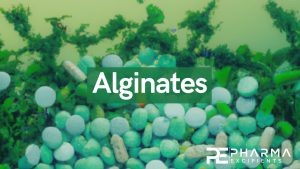Nanocellulose-Based Film-Forming Hydrogels for Improved Outcomes in Atopic Skin

Atopic dermatitis (AD) is a chronic inflammatory skin disease characterized by impaired skin barrier function. Amongst the various dermal formulations that are being used and/or investigated for AD treatment, one of the advanced approaches is the use of hydrogels as film-forming systems that are applied directly to the skin and have the added value of providing a physical barrier, which is lacking in atopic skin. Novel film-forming hydrogels based on two different nanocrystalline celluloses (NCCs) in combination with one of two natural polymers (alginate or pectin) were developed for incorporation of betamethasone dipropionate (BDP).
Initially, the low water solubility of BDP was resolved by prior dissolution in a self-microemulsifying drug delivery system (SMEDDS). The mixture of Kolliphor® EL/Capryol® 90 in a ratio of 8/2 was chosen on the merit of its high BDP-saturated solubility and no BDP precipitation upon water dilution, enabling BDP to remain dissolved after incorporation into hydrogels. The solvent evaporation method was used to prepare the films, and their high water retention capacity was confirmed in vitro on artificial membranes and pig ear skin. The presented results thus confirm NCC-based film-forming hydrogels as a very promising drug delivery system for AD treatment.
2.1 Materials
Gel NCC ((gNCC) Navitas, Podcerkev, Slovenia), powder NCC ((pNCC) Celluforce, Montreal, QC, Canada), sodium alginate ((ALG) Protanal® LF 10/60, FMC BioPolymer, Philadelphia, PA, USA), pectin ((PEC) Sigma-Aldrich, St. Louis, MO, USA), glycerol (Pharmachem, Ljubljana, Slovenia), and purified water were used to prepare the film-forming hydrogels. Capryol® 90 (Gattefosse, Saint-Priest, France) and Kolliphor® EL (BASF, Ludwigshafen, Germany) were used to form a self-microemulsifying drug delivery system (SMEDDS). For the solubility study of betamethasone dipropionate ((BDP) Sicor S.R.L., Roveretto, Italy), oleic acid (Sigma-Aldrich, St. Louis, MO, USA), Plurol® Oleique (Gattefosse, Saint-Priest, France), isopropyl myristate (Sigma-Aldrich, USA), Tween 80 (Merck, Darmstadt, Germany), Tween 20 (Merck, Darmstadt, Germany), Labrasol (Gattefosse, Saint-Priest, France), and polyethylene glycol 400 (Sigma-Aldrich, St. Louis, MO, USA) were used as excipients. For HPLC (high-performance liquid chromatography) analysis, all reagents (acetic acid (Merck, Darmstadt, Germany), methanol (Avantor, Radnor, PA, USA), and acetonitrile (Avantor, Radnor, PA, USA)) were of HPLC grade.
2.2. Preparation of SMEDDS
2.2.1. Solubility Study
The solubility of BDP in various oil excipients (oleic acid, Capryol 90, Plurol® Oleique, isopropyl myristate), surfactants (Kolliphor EL, Tween 80, Tween 20, Labrasol, polyethylene glycol 400), and water mixtures was determined by adding an excess amount of the drug to a few ml of selected excipients. The solutions were first stirred with a glass rod to moisture the drug, and then they were further stirred at room temperature for 48 h to reach equilibrium. The equilibrated samples were removed from the shaker and centrifuged at 3500 rpm for 15 min (for water mixtures) or at 50,000 rpm for 40 min (for oil and the surfactant excipient) at 25 °C. The supernatant was removed and filtered through a 0.45 μm membrane filter (Sartorius, Göttingen, Germany). The concentration of BDP was determined by the HPLC method, with samples tested in duplicate.
Download the full article as PDF here Nanocellulose-Based Film-Forming Hydrogels for Improved Outcomes in Atopic Skin
or read it here
Bolko Seljak, K.; Sterle Zorec, B.; Gosenca Matjaž, M. Nanocellulose-Based Film-Forming Hydrogels for Improved Outcomes in Atopic Skin. Pharmaceutics 2023, 15, 1918. https://doi.org/10.3390/pharmaceutics15071918
Read more on “Alginates as Pharmaceutical Excipients” here:


